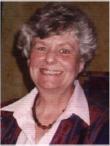
|
|
 |
| Global Perspective |
| April 5, 2005 | Vol. 3, No. 1 |

Mary Jo Leddy is the Director of Romero House for Refugees in Toronto, Canada.
|
Romero and John Paul II: Now they see face to faceBy Mary Jo Leddy Editor's Note: This year is the 25th anniversary of the 's assassination of Salvadoran Archbishop Oscar Romero. The commemoration was clearly the largest remembrance ever held. More than two weeks of seminars, Masses, concerts and pilgrimages gave tens of thousands of Salvadorans - and, according to church officials, at least 3,000 foreigners - an opportunity to reflect on Romero's words and life, as well as his death on March 24, 1980, victim of a government-sanctioned death squad. Much of this year's commemoration was delayed a week so as not to conflict with Holy Week, and culminated in an April 2 outdoor Mass. When Mary Jo Leddy sent the following story to NCRonline.org, she included this note: "The event (attended by thousands from around the world) was not even mentioned in La Prensa, the biggest paper in the country, run by ARENA party. They want to keep Romero among the 'disappeared.' " SAN SALVADOR, El Salvador -- They will recognize each other now -- with a recognition that was not possible this side of death. Such a line of thought caught me and pulled me inwards as I walked along with the crowds celebrating the 25th Anniversary of Romero's death. The pope had not recognized Romero, had not affirmed his pastoral leadership, had not protected him in his hour of great need. We do not really know what information the papal nuncio or the other Salvadoran bishops "fed" to John Paul II in the late '70s. The Vatican archives may eventually reveal the extent to which Romero's enemies, and there were many, influenced this papal disregard. What we do know is that John Paul II had a "communist" button and there were those who were able to push this. The labels were convenient to both the left and the right in El Salvador and elsewhere. Romero was a "subversive and communist" bishop and John Paul was a "conservative and eastern European" pope. It made for high drama, dangerous drama. I believe that now John Paul and Romero will see each other "face to face" and will recognize each other as the brothers they always were. I came to El Salvador with a group of 19 pilgrims to honor Romero, and to seek wisdom and inspiration for our small community named in memory of him. As we journeyed to the places associated with his life and death, as we heard the testimony of witnesses, I was struck anew by the transforming significance of his friendship with the Jesuit priest, Rutilio Grande. Romero had been a cautious and conservative bishop and he was worried about "subversive" priests. It was not that Romero was unaware of injustices in El Salvador, but he preferred the way of quiet diplomacy with his friends among the rich and the powerful. He saw but he did not see; heard but did not hear. And then one day, on the dusty road between Augilares and El Paisnal, Rutilio Grande was gunned down and killed, together with an old campesino and a young boy. It was then that the scales fell from Oscar Romero's eyes and he saw the reality he inhabited -- as if for the first time. He saw through the eyes of his friend who became the eyes of his eyes, the ears of his ears, the voice of his voice. He began to see and hear the people Rutillio had loved and served. They were no longer objects of concern, souls to be saved. They were human beings, each one with a name and a face. We were told that Rutillio Grande and Oscar Romero had grown to appreciate each other while they were living in the major seminary where the Jesuit had been the rector. Rutillio had become a sort of spiritual director for Romero. Each of them had gone beyond the labels of "subversive priest" and "conservative bishop." There was mutual respect, admiration, care. They saw each other face to face. I now feel that the most significant place we visited was neither the crypt in the cathedral where Romero was buried nor the chapel where he was killed. It is the poor and dilapidated church in El Paisnal where Rutilio Grande S.J. lies buried with Manuel Solor Zeno at one side and Nelson Rutilio Lamus at the other side. The three lie entombed in the floor directly in front of the altar. A small breeze wafts through the space between the tin roof and the peeling walls. A fluorescent fixture hangs precariously above the plain wooden altar. It was fitting. It was where the faith of Rutillio Grande had been located, the place and the people that had summoned his loyalty and affection. I believe that, for most of us today, it is friendship that transforms our commitment of justice from work for a cause to a way of life. Until you have a friend who is poor, poverty remains an issue that you can walk away from at any time. Only when you have a friend who has been violated, can you lose the clinical distance which makes debates about good violence and bad violence seem reasonable. Until you have a friend who is a refugee, you do not factor in the human cost of war. Your friend is the one who faces you, who summons you to face yourself. Your friend is the angel of the annunciation summoning you to remain life-size in a time of moral diminishment.
|
| Copyright
© 2005 The National Catholic Reporter Publishing Company, 115
E. Armour Blvd., Kansas City, MO 64111
TEL: 1-816-531-0538 FAX: 1-816-968-2280 |